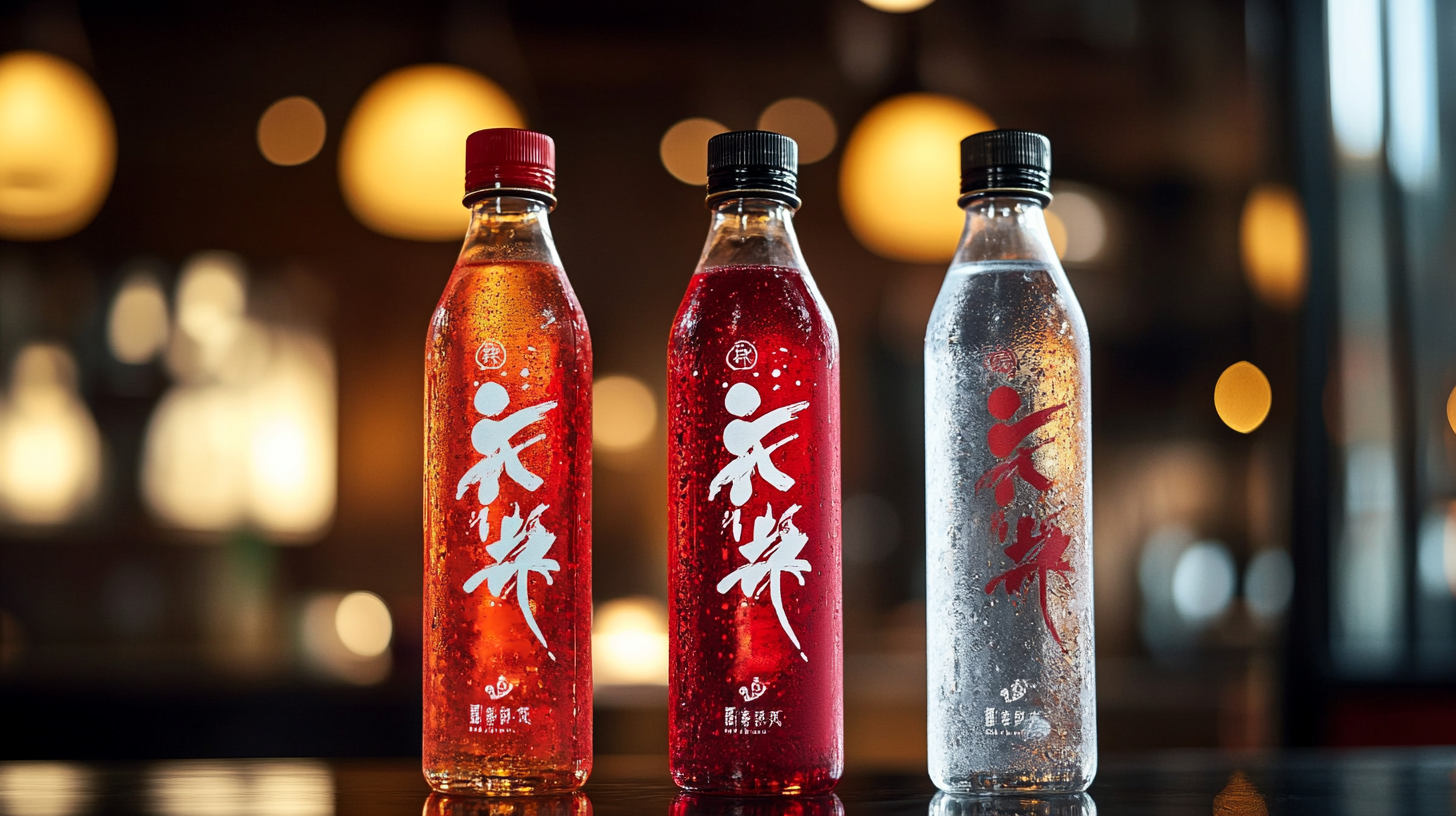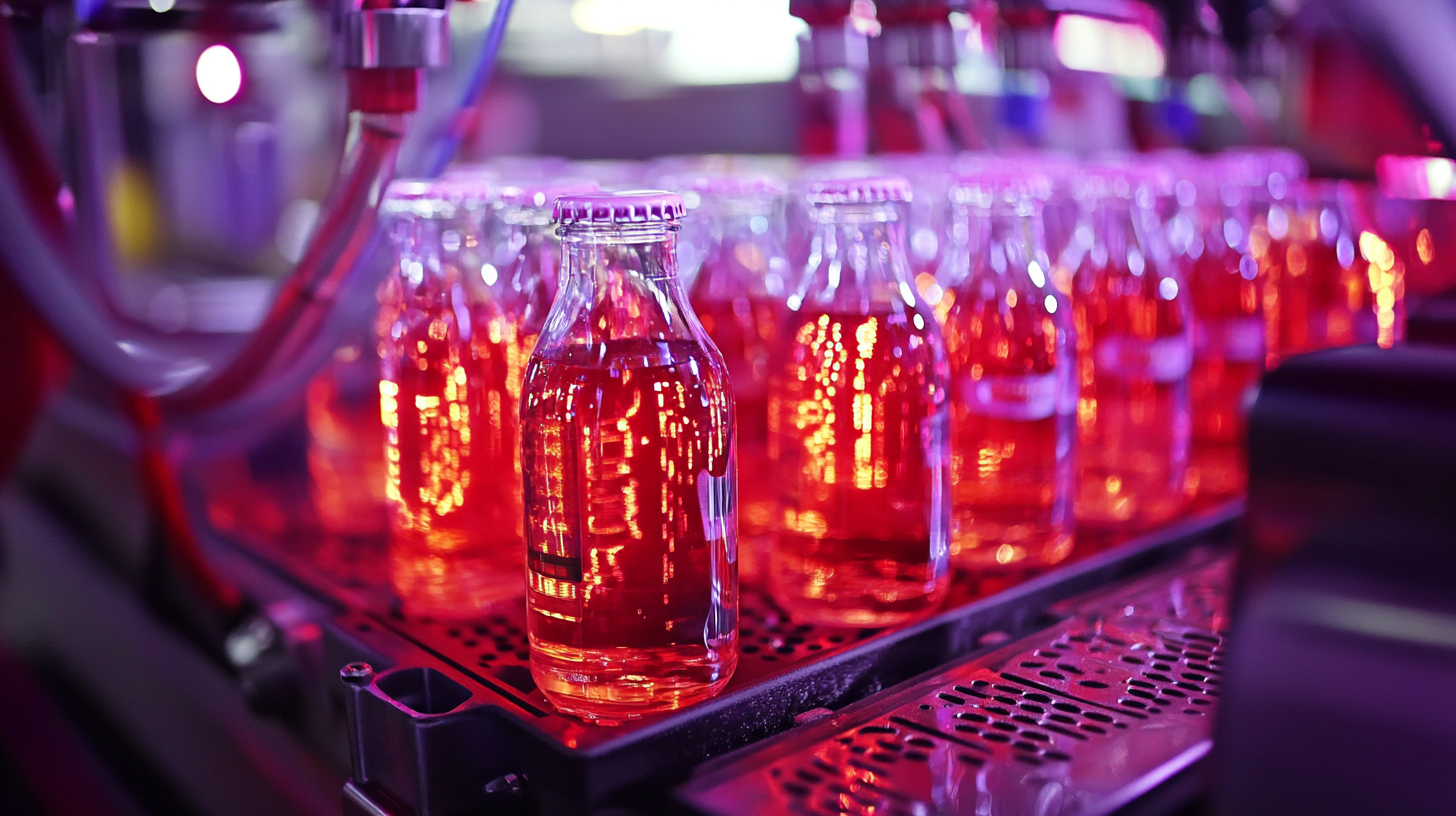In recent years, the escalation of trade tensions between the United States and China, notably through the imposition of tariffs, has posed substantial challenges to the manufacturing sector in China. However, the resilience of Chinese manufacturing is evidenced by a remarkable adaptation and growth in key industries, including labeling solutions. According to a report by Smithers Pira, the global market for labeling machines is expected to reach approximately $7.9 billion by 2025, driven by innovation and the growing demand for automation. Among these innovations, the advancement of the "Bottle Labeler" technology stands out as a critical component that enhances efficiency and accuracy, enabling manufacturers to maintain competitiveness despite external pressures. As we delve into the myriad ways in which Chinese manufacturers are leveraging cutting-edge labeling technologies, it becomes clear that strategic adaptation and innovation are imperative in overcoming the tariff-induced obstacles, ensuring continued growth in this dynamic landscape.

The ongoing US-China tariff conflict has significantly reshaped the manufacturing landscape, prompting companies in China to adapt quickly to maintain competitiveness. According to a report from the China Federation of Logistics and Purchasing, the manufacturing sector in China showed a resilience factor, with a Purchasing Managers' Index (PMI) consistently above 50, reflecting an expansion in activity. Innovative solutions, such as advanced bottle labeling technologies, have become essential for manufacturers to enhance efficiency and reduce costs amidst rising tariffs on goods exported to the U.S.
Furthermore, data from the World Bank highlights that Chinese manufacturers have increasingly turned towards automation to mitigate the effects of tariffs. For instance, investments in state-of-the-art labeling machinery have surged by approximately 15% in the last two years. This trend not only aids in reducing the labor costs associated with manual labeling but also improves the accuracy and speed of production lines. Consequently, while tariffs have posed challenges, they have also spurred innovation within the manufacturing sector, allowing businesses to refine their operations and explore new market opportunities.

Innovation plays a critical role in driving resilient growth for China's manufacturing sector, especially in the face of ongoing tariff challenges from the US. As companies adapt to external pressures, they are increasingly embracing creative solutions to maintain their competitiveness. One area of focus has been the development of advanced bottle labeling technologies, which streamline production processes and enhance product visibility in a crowded marketplace.
To stay ahead, manufacturers should consider incorporating automated labeling systems that not only boost efficiency but also ensure consistent quality. Investing in modern equipment and software can lead to significant time and cost savings, allowing businesses to allocate resources more effectively. Additionally, maintaining a commitment to research and development fosters an environment where innovative ideas can flourish, ensuring that companies can pivot quickly in response to market shifts.
Another tip for manufacturers is to leverage data analytics to gain insights into consumer preferences and market trends. This information can help guide product design and labeling strategies, ultimately leading to a better alignment with customer demands. By prioritizing innovation and utilizing cutting-edge technology, China's manufacturing industry can continue to thrive despite external challenges.
| Year | Manufacturing Growth Rate (%) | Tariff Rate (%) | Investment in Innovation (Billion USD) | Export of Labeling Equipment (Million USD) |
|---|---|---|---|---|
| 2018 | 6.5 | 10 | 50 | 120 |
| 2019 | 6.0 | 15 | 55 | 130 |
| 2020 | 2.3 | 25 | 60 | 115 |
| 2021 | 8.1 | 20 | 70 | 140 |
| 2022 | 5.5 | 30 | 80 | 160 |
As the manufacturing landscape in China continues to evolve amidst US-China tariff challenges, advancements in bottle labeling technology are playing a critical role in enhancing production efficiency. According to a report by Grand View Research, the global labeling market is expected to grow from $42 billion in 2022 to over $67 billion by 2030, illustrating a significant push towards innovation in labeling practices. Specifically, the adoption of advanced labeling machines has seen a substantial uptick, with manufacturers seeking equipment that combines speed, accuracy, and adaptability to various bottle formats.
The latest innovations in labeling technology, such as automated labelers equipped with AI and machine learning capabilities, have been transformative. These systems can deliver up to 300 labels per minute while ensuring precision, reducing waste, and minimizing human error. A study from the Packaging Technology and Research journal highlighted that production efficiency can increase by as much as 30% with the use of these advanced labeling solutions. This leap in efficiency not only supports greater throughput but also helps manufacturers maintain competitiveness in a challenging market, showcasing the resilience of China's manufacturing sector through technological prowess.
China's manufacturing sector continues to showcase remarkable resilience amidst the challenges posed by US-China tariffs. Innovative practices have emerged as key strategies for Chinese manufacturers, particularly evident in the adoption of advanced labeling solutions. Companies are increasingly turning to innovative bottle labeling technologies that enhance productivity and minimize production costs while maintaining high quality standards. A recent report by the China National Bureau of Statistics indicated that the manufacturing sector's output expanded by 6.4% in the last quarter, reflecting robust growth in this area.
Case studies highlight how successful Chinese manufacturers are adapting to these challenges through technology and innovation. For instance, a leading beverage company implemented automated bottle labeling systems, resulting in a 30% increase in efficiency and a significant reduction in labeling errors. Such advancements not only streamline operations but also allow manufacturers to respond swiftly to changing market demands, reinforcing their competitive edge.
**Tips:** To thrive in a challenging market, manufacturers should invest in automation and embrace cutting-edge technology. Engaging in continuous training for staff on new equipment and processes can lead to sustained operational improvements. Additionally, developing flexible production lines can help manufacturers quickly adjust to fluctuations in product demand, ensuring they remain agile in dynamic marketplaces.

The future outlook for China’s manufacturing sector appears promising despite ongoing trade tensions with the United States. As tariffs have reshaped the global trade landscape, Chinese manufacturers are adapting by embracing innovation and efficiency. This adaptability is crucial, especially in sectors that thrive on precision and quality, like bottle labeling. Advanced technologies and best practices in labeling not only streamline production but also enhance product visibility and compliance, making manufacturers more competitive in the international market.
Moreover, the resilience of Chinese manufacturers can be attributed to a robust focus on research and development. By investing in new technologies, including smart labeling systems and automation, companies are not just surviving trade challenges but are positioned for sustainable growth. This innovative approach ensures that they can meet both domestic and international demands while navigating the complexities of tariffs and supply chain disruptions. As the landscape continues to evolve, the synergy between innovation and strategic growth will be key in maintaining a competitive edge amidst the challenges posed by international trade tensions.
Headquarters
2980 Scott St, Vista, CA 92081
Phone: (760) 734-4177
Fax: (760) 734-4188
Open: 8:00 am – 4:30 pm
Texas
8051 Jetstar Dr #175 Irving, TX 75063
Phone: (972) 915-6888
Fax: (972) 915-6999
Open: 8:00 am – 4:30 pm
Florida
14231 Jetport Loop. #1 Fort Myers, FL 33913
Phone: (239) 225-4020
Fax: (239) 225-4024
Open: 8:00 am – 4:30 pm